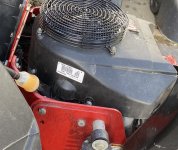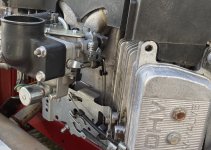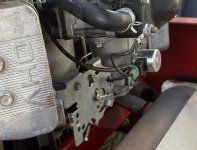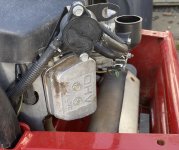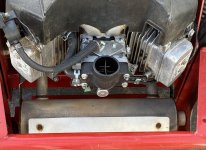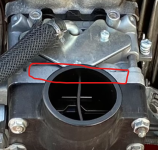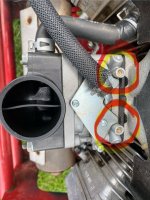Mower: Ferris IS1500Z
Engine: Kawasaki FH641V-BS33
Approx 2007 with 1400 hrs
Issue: Bogs down and seems to run very rich under load
Hi all,
I’m stumped on this issue with a mower I purchased over the winter. Unfortunately I didn’t test run it long enough to verify there weren’t any issues like the one I’m having. As soon as a load is added (drive is ok until blades are engaged) it starts to bog down and I can smell the fuel as if it’s running very rich. I changed the plugs & coils, cleaned the double barrel carb and the choke is open when it’s supposed to be. It just runs really rich as soon as load is added. It will occasionally give a burst of power (as if the mixture is suddenly correct) for 15-20 seconds every 15 minutes or so. I was able to get the lawn cut, but it was somewhat of a slow pace, and the RPMs were barely at the point where the blades would be moving fast enough to cut. It looks like the guy had put a new carburetor on it, but the control board/governor spring looks a bit worse for wear. The only other thing I can think of is that maybe the jets need replacing. I don’t think there’s any mixture adjustments on this. I’m also not sure what type of governor it is, and that seems to be a possible issue since it’s just not running well under load. Thanks in advance for any thoughts.
Tom
Engine: Kawasaki FH641V-BS33
Approx 2007 with 1400 hrs
Issue: Bogs down and seems to run very rich under load
Hi all,
I’m stumped on this issue with a mower I purchased over the winter. Unfortunately I didn’t test run it long enough to verify there weren’t any issues like the one I’m having. As soon as a load is added (drive is ok until blades are engaged) it starts to bog down and I can smell the fuel as if it’s running very rich. I changed the plugs & coils, cleaned the double barrel carb and the choke is open when it’s supposed to be. It just runs really rich as soon as load is added. It will occasionally give a burst of power (as if the mixture is suddenly correct) for 15-20 seconds every 15 minutes or so. I was able to get the lawn cut, but it was somewhat of a slow pace, and the RPMs were barely at the point where the blades would be moving fast enough to cut. It looks like the guy had put a new carburetor on it, but the control board/governor spring looks a bit worse for wear. The only other thing I can think of is that maybe the jets need replacing. I don’t think there’s any mixture adjustments on this. I’m also not sure what type of governor it is, and that seems to be a possible issue since it’s just not running well under load. Thanks in advance for any thoughts.
Tom

